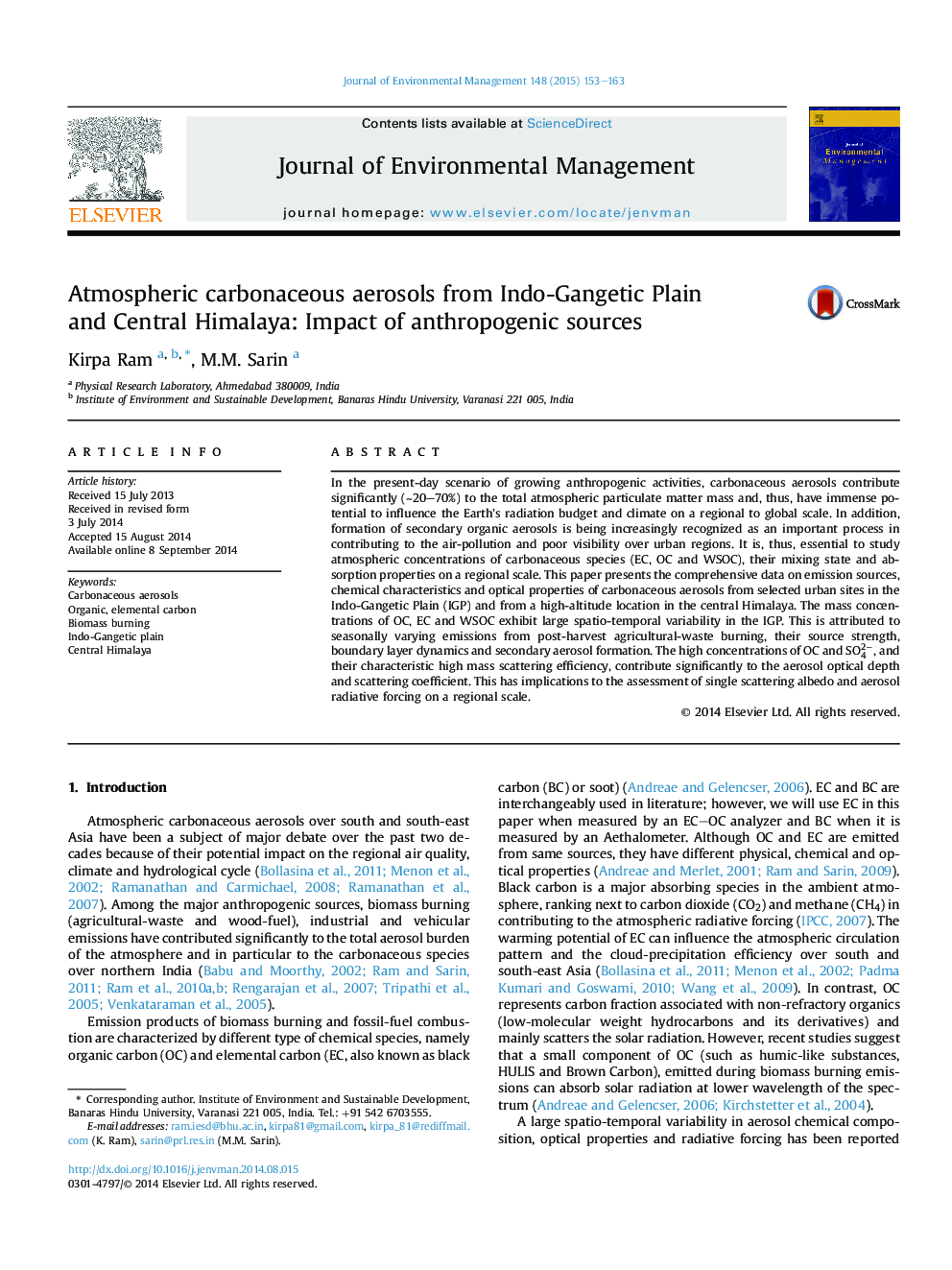| Article ID | Journal | Published Year | Pages | File Type |
|---|---|---|---|---|
| 1055697 | Journal of Environmental Management | 2015 | 11 Pages |
•Comprehensive data on chemical and optical properties of carbonaceous aerosols.•Diagnostic ratios of EC, OC and WSOC suggest dominance of biomass burning emissions.•Significantly high WSOC/OC ratios provide evidence for SOA formation.•High concentrations of OC and SO42− dominate scattering coefficient in aerosols.
In the present-day scenario of growing anthropogenic activities, carbonaceous aerosols contribute significantly (∼20–70%) to the total atmospheric particulate matter mass and, thus, have immense potential to influence the Earth's radiation budget and climate on a regional to global scale. In addition, formation of secondary organic aerosols is being increasingly recognized as an important process in contributing to the air-pollution and poor visibility over urban regions. It is, thus, essential to study atmospheric concentrations of carbonaceous species (EC, OC and WSOC), their mixing state and absorption properties on a regional scale. This paper presents the comprehensive data on emission sources, chemical characteristics and optical properties of carbonaceous aerosols from selected urban sites in the Indo-Gangetic Plain (IGP) and from a high-altitude location in the central Himalaya. The mass concentrations of OC, EC and WSOC exhibit large spatio-temporal variability in the IGP. This is attributed to seasonally varying emissions from post-harvest agricultural-waste burning, their source strength, boundary layer dynamics and secondary aerosol formation. The high concentrations of OC and SO42−, and their characteristic high mass scattering efficiency, contribute significantly to the aerosol optical depth and scattering coefficient. This has implications to the assessment of single scattering albedo and aerosol radiative forcing on a regional scale.
